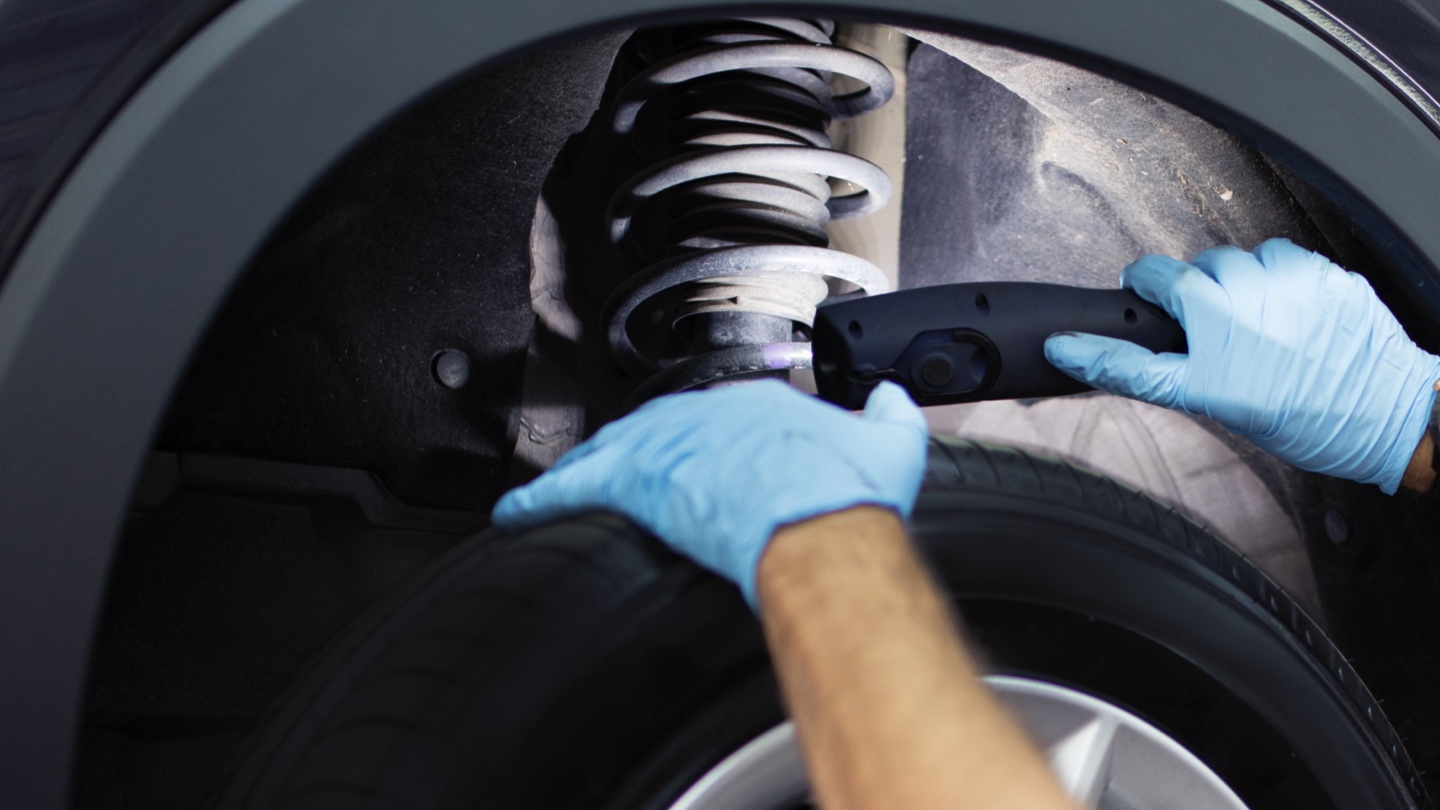
Shocks 101
When Should I Have My Shocks & Struts Inspected?

Critical for Improved Driving Safety
Crucial for steering, stopping and stability, shocks and struts are one of the most important safety features of your vehicle. Like many parts, shocks and struts can wear out gradually during the course of normal operation. Most people realize shock absorber or strut failures can negatively impact comfort, but many don’t realize that they can also compromise your vehicle’s steering, handling and braking. Inspecting these safety-critical ride control parts on a regular basis helps keep you in control of your vehicle, and your passengers safer.
Annual Inspection Recommendation
Experts recommend having your vehicle’s shocks and struts inspected annually or any time your vehicle is brought in for tire, brake or alignment repairs. It's relatively easy to determine when tires, brakes and windshield wipers are worn out; shocks and struts, on the other hand, aren’t as simple to detect signs of degradation, in spite of the fact that these safety-critical components are highly susceptible to everyday wear and tear. Damage to these parts are many times not visible, that’s why an annual inspection is key. Inspecting when replacing components such as brakes, tires or other suspension parts is critical, especially if you notice a pattern of frequent replacements which may indicate other factors at play causing them to wear prematurely. Having shocks and struts inspected and replaced if needed ensures that your vehicle is in top operating condition.

Factors That Cause Shocks & Struts To Wear
While ride components wear out due to everyday driving, there are other factors that can come into play. Your driving habits and the environment you drive in can have a big effect on the lifespan of your shocks and struts.
For example, a driver in northern climates may need to replace their shocks and struts sooner due to potholes created by freeze/thaw cycles and exposure to road salt. Or if you routinely tow heavy loads, this can cause your shocks and struts to wear faster. Examine your driving habits and the conditions you drive in – you may need to have your shocks and struts inspected more frequently.
- Shocks and struts may not show any visible signs of wear, but internal components may be past their useful life which could affect your steering, stopping and stability.
- Typical shocks and struts “stroke” an average of 1,750 cycles per mile – that’s 21 million cycles per 12,000 miles/19,300 kilometers.
- Shocks and struts are susceptible to additional wear caused by heavy use and severe road/environmental conditions.
- Ride control components interact with – and depend on – other key steering and suspension parts. Failure of any these other parts can affect your shocks and struts.
Signs it's Time For An InspectioN
If you notice any of these symptoms, then you should have your shocks and struts inspected by your trusted service provider.
- Slowing down to gain control in corners or highway ramps.
- Repeated replacement of front brakes, suspension components or tires.
- Vehicle is difficult to control at highway speeds, during windy conditions or when loaded.
- Vehicle has excessive body movement such as nose dive while braking or bouncing after a speed bump.
Learn more about quality shocks, struts, and strut assemblies, find the right car part, or find a local repair shop today.
The content in this article is for informational purposes only. You should consult with a certified technician or mechanic if you have questions relating to any of the topics covered herein. Tenneco will not be liable for any loss or damage caused by your reliance on any content.

